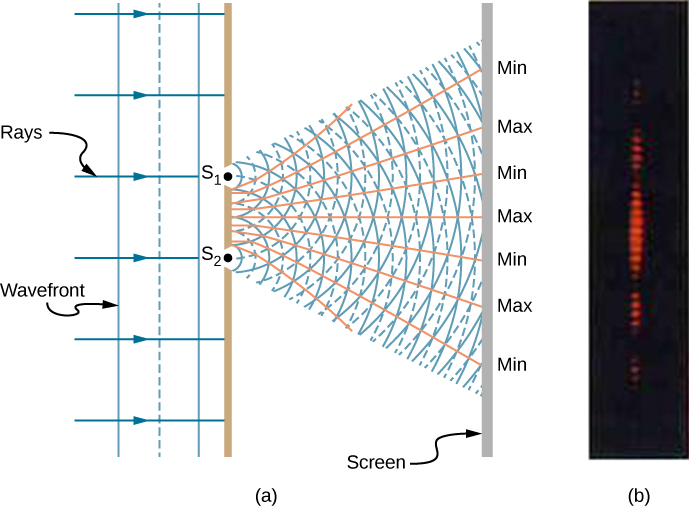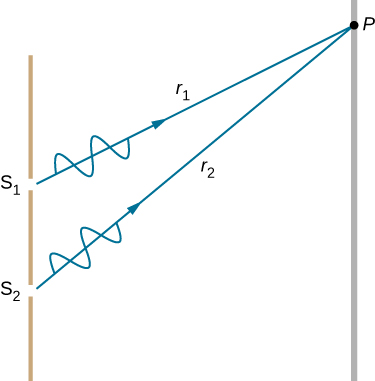| << Chapter < Page | Chapter >> Page > |
Young used sunlight, where each wavelength forms its own pattern, making the effect more difficult to see. In the following discussion, we illustrate the double-slit experiment with monochromatic light (single ) to clarify the effect. [link] shows the pure constructive and destructive interference of two waves having the same wavelength and amplitude.

When light passes through narrow slits, the slits act as sources of coherent waves and light spreads out as semicircular waves, as shown in [link] (a). Pure constructive interference occurs where the waves are crest to crest or trough to trough. Pure destructive interference occurs where they are crest to trough. The light must fall on a screen and be scattered into our eyes for us to see the pattern. An analogous pattern for water waves is shown in [link] . Note that regions of constructive and destructive interference move out from the slits at well-defined angles to the original beam. These angles depend on wavelength and the distance between the slits, as we shall see below.

To understand the double-slit interference pattern, consider how two waves travel from the slits to the screen ( [link] ). Each slit is a different distance from a given point on the screen. Thus, different numbers of wavelengths fit into each path. Waves start out from the slits in phase (crest to crest), but they may end up out of phase (crest to trough) at the screen if the paths differ in length by half a wavelength, interfering destructively. If the paths differ by a whole wavelength, then the waves arrive in phase (crest to crest) at the screen, interfering constructively. More generally, if the path length difference between the two waves is any half-integral number of wavelengths [(1 / 2) , (3 / 2) , (5 / 2) , etc.], then destructive interference occurs. Similarly, if the path length difference is any integral number of wavelengths ( , 2 , 3 , etc.), then constructive interference occurs. These conditions can be expressed as equations:

Young’s double-slit experiment breaks a single light beam into two sources. Would the same pattern be obtained for two independent sources of light, such as the headlights of a distant car? Explain.
No. Two independent light sources do not have coherent phase.
Is it possible to create a experimental setup in which there is only destructive interference? Explain.
Why won’t two small sodium lamps, held close together, produce an interference pattern on a distant screen? What if the sodium lamps were replaced by two laser pointers held close together?
Because both the sodium lamps are not coherent pairs of light sources. Two lasers operating independently are also not coherent so no interference pattern results.

Notification Switch
Would you like to follow the 'University physics volume 3' conversation and receive update notifications?